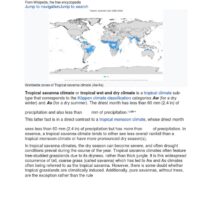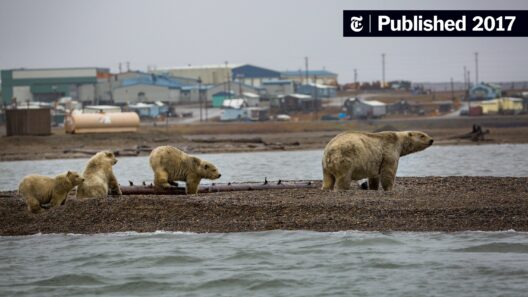The Ganges River, revered as a sacred entity and lifeline for millions, faces a profound existential threat exacerbated by global warming. This iconic waterway not only sustains diverse ecosystems but also underpins the livelihoods of countless communities, producing an intricate web of sociocultural, economic, and environmental interdependencies. Understanding the multifaceted challenges confronting this vital river is imperative for effective conservation strategies.
Climate change manifests as a formidable adversary to the Ganges, instigating a series of detrimental effects on its ecosystem. The phenomenon leads to erratic weather patterns, a harbinger of floods and droughts that disrupt its flow and quality. The forecasted increase in temperature and unpredictable precipitation intensify the threat to aquatic life, including the endangered Ganges river dolphin and various fish species, integral to the river’s biodiversity.
One of the primary ramifications of global warming is the accelerated melting of glaciers in the Himalayas, from which the Ganges originates. This glacier melt initially contributes to elevated water levels, yet as the impacts of climate change deepen, the shrinking glacier mass will ultimately jeopardize water availability as it declines over time. The rivers fed by these glaciers are thus forecasted to face reduced flows in the long term, placing immense pressure on agricultural practices reliant on consistent water supply.
As temperatures rise, the increased likelihood of extreme weather events becomes evident. Flooding caused by intensified monsoons can be catastrophic, resulting in the erosion of riverbanks and the destruction of critical ecosystems. Meanwhile, prolonged bouts of drought not only diminish water availability but also exacerbate pollution levels, as stagnation fosters the proliferation of pathogens. Consequently, the water cradling the livelihoods of over 400 million people becomes a vehicle for disease, highlighting an urgent public health crisis.
The anthropogenic activities surrounding the Ganges further compound its vulnerability. Industrial waste, agricultural runoff, and improper sewage management lead to alarmingly high levels of pollution. As climate change continues to aggravate these issues, the confluence of worsening water quality and dwindling freshwater availability poses severe threats to aquatic life and human health alike. The Ganges remains a poignant symbol of nature’s resilience, yet it is a daunting reminder of human negligence.
Moreover, altered rainfall patterns and rising temperatures have extensive implications for the agricultural sector. Many regions that depend on seasonal flooding to replenish soil nutrients find themselves grappling with agricultural decline. The shift in environmental conditions makes food security increasingly precarious. Farmers must adapt, shifting to more resilient crops and innovative irrigation practices; however, the transition often comes with economic challenges and the necessity for extensive education on sustainable practices.
Pollution remains a titan of concern. The government and various non-governmental organizations have undertaken several initiatives aimed at cleaning the Ganges. However, these endeavors often fall short due to insufficient funding, lack of governmental coordination, and the sheer scale of the pollution challenge. Addressing water quality necessitates robust legal frameworks alongside enhanced stakeholder engagement to ensure collective action and accountability.
Community involvement is paramount in safeguarding the Ganges. Indigenous populations and local communities play an essential role in conservation efforts. Their knowledge of traditional practices can provide invaluable insights into sustainable fishing and land management techniques. Moreover, fostering awareness through educational programs can bridge the gap between environmental science and local belief systems, leading to transformative action. Grassroots movements are increasingly influential, as local people mobilize to protect their ecosystems.
Transboundary water governance represents a critical aspect of managing the Ganges. With the river flowing through multiple countries, cooperation among India, Bangladesh, Nepal, and China is essential to ensure resource sharing and conflict resolution. Diplomatic initiatives should focus on creating equitable frameworks for sharing water resources while addressing climate adaptation strategies. International collaboration can pave the way for comprehensive policies that are adaptable, ensuring the Ganges’s survival amidst the climate crisis.
Technological innovations hold promise for grassroots mobilization and conservation efforts. The implementation of remote sensing technologies facilitates real-time monitoring of the river’s health, allowing for timely interventions. Furthermore, artificial intelligence can optimize water use in agriculture, enhancing resilience against droughts and helping farmers adapt to shifting climatic conditions. Such advancements herald a new era of data-driven conservation, propelling traditional methodologies into a modern context.
In conclusion, the Ganges River stands as a critical indicator of our planet’s health amidst the escalating threats posed by global warming. The impending crises related to water availability, pollution, and ecosystem degradation necessitate immediate attention from policymakers, communities, and environmental advocates alike. Addressing these challenges requires a multifaceted approach—integrating conservation, technological advancements, community engagement, and transboundary cooperation. The Ganges is more than a river; it symbolizes a vital connection to a broader ecological narrative that demands our vigilance and action.
The lifeline of this storied river must not merely exist as a backdrop in our consciousness—it must take center stage in our collective endeavors to combat climate change. The preservation of the Ganges River is synonymous with safeguarding the future of millions, the vitality of countless species, and the essence of our global environment.






